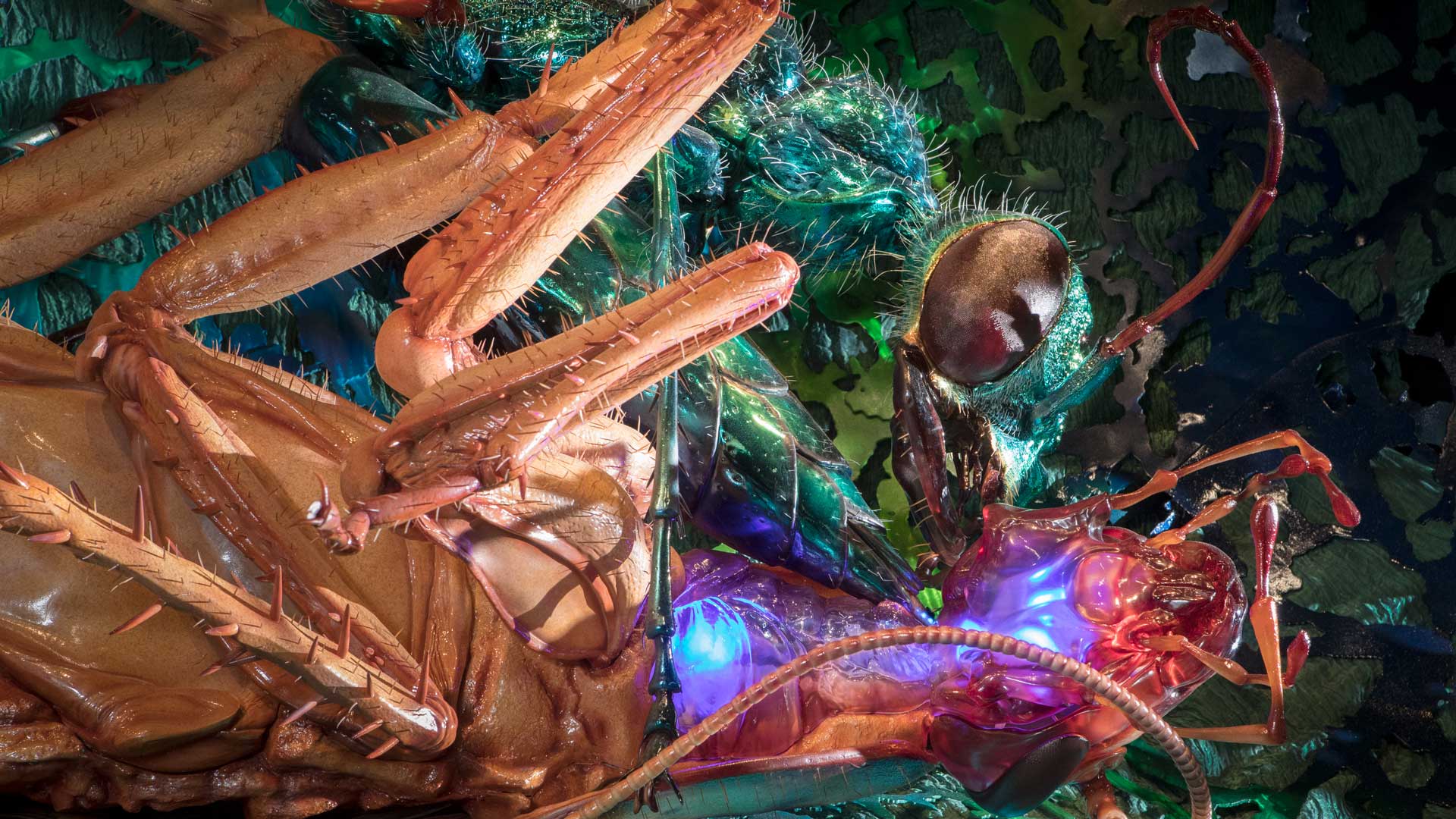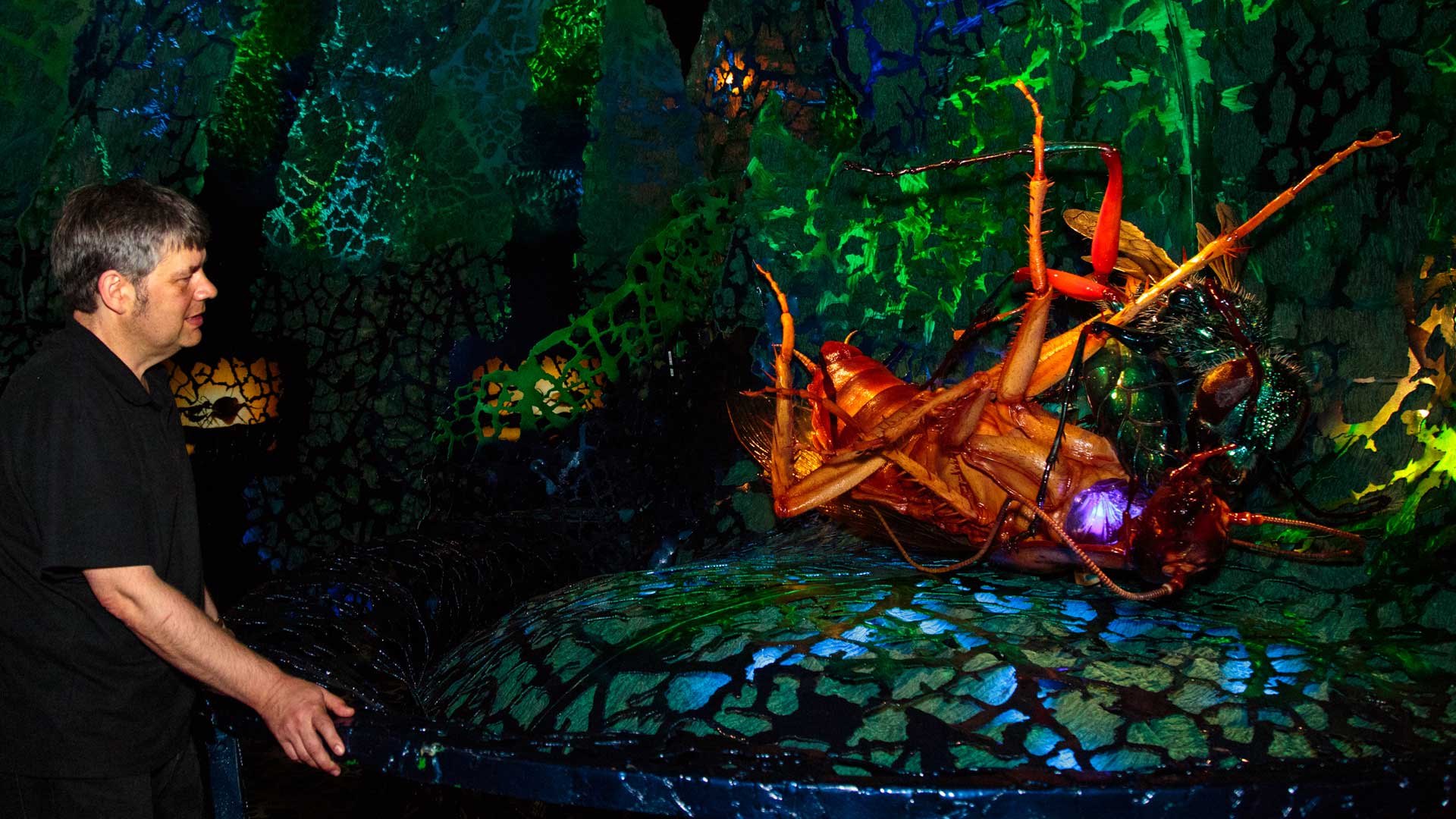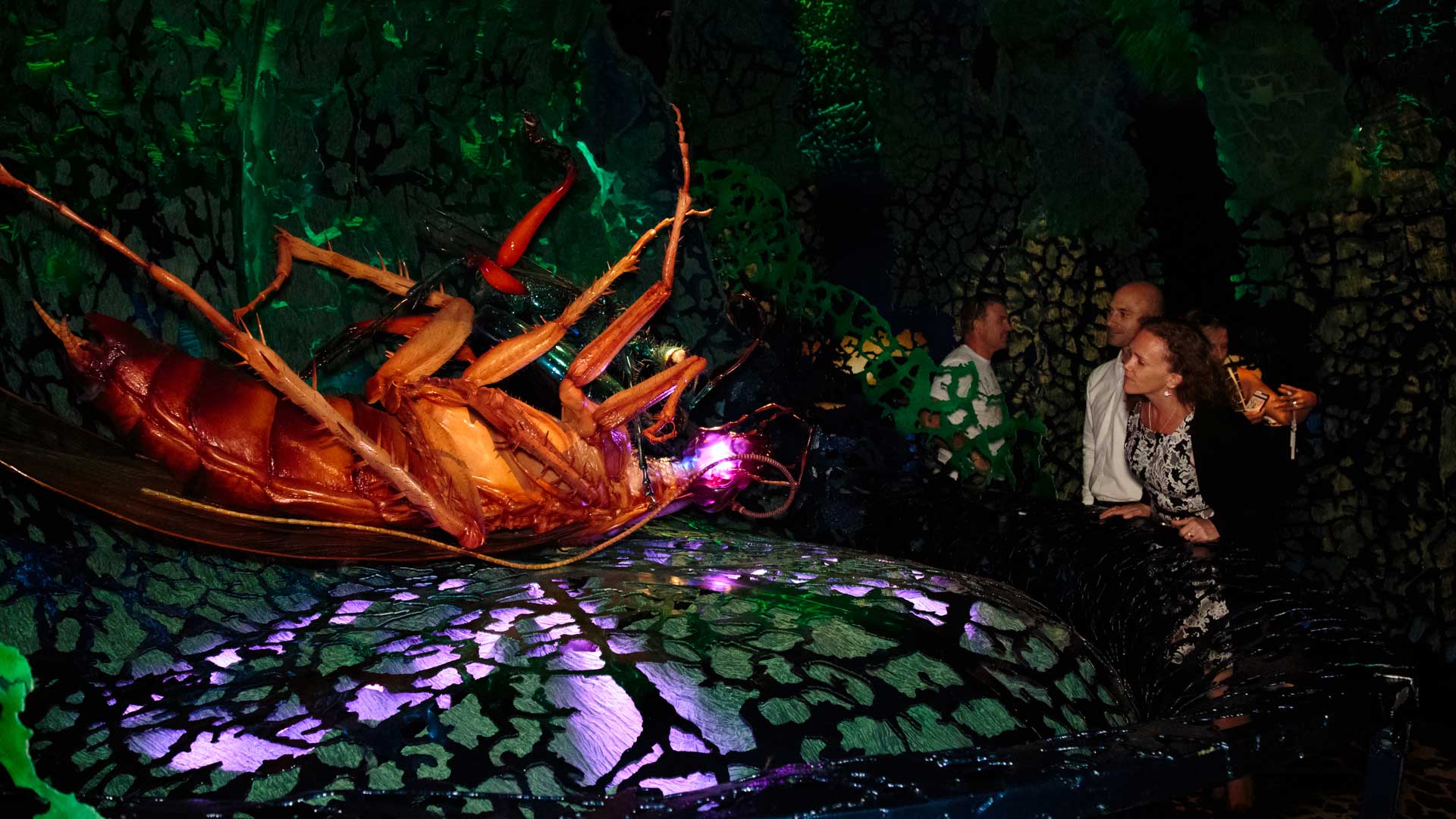Beautiful. Brain surgeon. Poisoner. Zombie-Maker. Mother. All these names can be applied to the star of Bug Lab’s venom section, the amazingly emerald-coloured jewel wasp (Ampulex compressa). If cockroaches had nightmares, she’d have a starring role. The jewel wasp’s particular piece of fiendish brilliance is her ability to deploy venom to make a cockroach do exactly what she wants and let’s just say right now that it does not end well for the cockroach. The cockroach’s ultimate fate is to end up as both a living larder and a nursery for a jewel wasp grub.
While this behaviour had been known about for many years, it took Fred Libersat and his colleagues over in Israel to crack the secret of how the jewel wasp hacked the cockroach neurosystem. In short, by stinging the cockroach in the right places, the jewel wasp’s venom can make the cockroach behave exactly as she wants.






